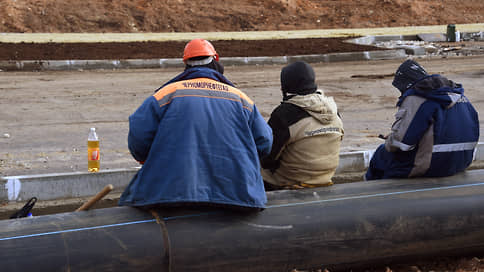Rosstat recorded the maximum drop in labor productivity in the Russian Federation since 2009
[ad_1]

At the end of 2022, the labor productivity indicator in the Russian Federation decreased by 3.6%, demonstrating the maximum drop since 2009, according to Rosstat data. This was led to by a reduction in GDP combined with a decrease in the unemployment rate in the country; part of the effect is probably explained by the departure of the most productive Western companies from the Russian Federation. At the same time, those sectors in which labor productivity did increase at the end of the year—the agro-industrial complex, construction and tourism industry—were able to increase output due to external conditions, reorientation of domestic demand and government support.
In 2022, labor productivity in the Russian Federation decreased by 3.6%, according to Rosstat data, which the agency published on Friday. The departmental methodology for calculating this indicator involves taking into account the index of physical volume of gross value added (GVA) and the index of labor costs in full-time equivalent. Note that one of the explanations for the effect is probably the departure of Western companies from the Russian Federation, which, according to numerous studies, demonstrated a significant contribution to the overall increase in the indicator, including through the transfer of technology and management practices.
At the end of last year, productivity growth was demonstrated by only a few industries out of those for which Rosstat calculates this indicator (14 in total). Thus, the maximum increase was recorded in agriculture and hunting – by 8.7% (recall that 2022 saw a record harvest for the Russian Federation, accompanied by record exports while foreign prices for agricultural products soared due to the Russian military operation in Ukraine and logistics problems ). In second place was construction – by 1.8% (remember, it was supported by preferential mortgages, and prices were rising due to the fact that housing is traditionally perceived by the population as a safe asset for investing money), in third – tourism and public catering, by 1 .3% (including due to the closure of external routes). Another industry in which an increase was recorded was the provision of electricity, gas and steam (by 0.8%). The remaining ten areas showed a decrease in labor productivity – the maximum drop was recorded in the sphere of wholesale and retail trade, repair of vehicles and motorcycles (by 12.9%).
In second place is the sphere of professional, scientific and technical activities (by 7.7%), in third place is the sphere of water supply, sanitation, organization of waste collection and disposal (by 7%). The minimum reduction in productivity indicators was demonstrated by activities in real estate operations (by 1.4%), fishing (by 2.4%) and activities in the field of information and communications (by 2.8%). Overall, the decline in national labor productivity in 2022 was the largest since 2009 (it fell by 4.1%). At the same time, the last time a drop in productivity was recorded was in 2020 – by 0.4%.
Let us remind you that since 2019, increasing labor productivity has been the goal of a specialized national project. However, first of all, he aims to change the situation in five non-resource sectors of the economy (manufacturing, agriculture, construction, transport and trade), introducing the principles of lean production, modern digital solutions and retraining of workers and management personnel. Now, as Kommersant was told by the Ministry of Economy, more than 5 thousand enterprises with a total number of employees of more than 1.5 million are participating in the activities of the national project. “In 2022, labor productivity growth among them increased by 2.3%,” the ministry emphasized .
As Rostislav Kapelyushnikov, deputy head of the Center for Labor Research at the Higher School of Economics, notes, the drop in labor productivity in 2022 is the result of a reduction in output in most industries while maintaining or increasing employment. “A reduction in GDP predictably leads to a reduction in productivity, since employment is an inertial value and remains relatively stable even during a crisis,” he notes. Let us recall that in 2022, against the backdrop of a 2.1% decline in GDP, the unemployment rate in the Russian Federation not only did not increase, but, on the contrary, decreased to a historical minimum (3.7%). At the same time, he recalls, the share of wages in GDP at the end of 2022 decreased to 40%, which is the minimum figure in recent years. “This indicates that in reality the increase in wages did not keep pace with the rise in prices, so it would be wrong to say that Russian enterprises “overpaid” for low-productivity labor,” he said.
As Yuri Simachev, leading researcher at the Laboratory for Analysis of Institutions and Financial Markets at the Institute of Applied Economic Research (IPEI) of RANEPA, notes, the increase in productivity in agriculture, tourism and public catering reflects a reorientation of demand in these sectors. “In 2022, traveling abroad and importing a number of goods into the Russian Federation became more difficult, which is why Russians switched to domestic resorts and food products,” he says. At the same time, according to him, often the industry as a whole could demonstrate an increase in turnover even if it fell at large enterprises – due to an increase at small and medium-sized enterprises.
[ad_2]
Source link






